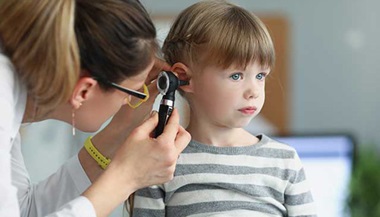Protect Your Child's Health in School
Children get sick more often than adults because their immune systems are not as developed. At schools and daycare centers, they are in close contact with one another, increasing the odds of sharing germs and infections. Parents can help protect children with vaccinations and by teaching (and practicing) basic good hygiene.

First: Prevention!
Vaccinate. Today’s vaccines protect against some of the oldest, most dreaded infectious scourges of childhood. Developed through intense research efforts around the globe, they confer protection that past generations of parents could only have dreamed about.
Vaccines are critical to protect your child’s health as well as the health of those around him or her, especially the most vulnerable in our communities: the young and old with under-developed, damaged or suppressed immune systems (including those undergoing cancer treatment).
The Institute for Vaccine Safety at the Johns Hopkins Bloomberg School of Public Health has posted its 2015 vaccine and safety guide – including updates on the new 2015 Guardasil/HPV vaccine to protect children in later life against cancers, including cervical cancer. Gardasil 9 has been approved by the US FDA for protection of females (age 9-26 years) and males (age 9-15 years) against nine HPV types.
These vaccines are best given long before sexual activity begins, both because the vaccines take time to work and because pediatricians/physicians have the most contact with individuals when they are still in their youth.
“Parents should note that individual states have specific vaccine requirements for school entry and that children may be excluded from school if they do not meet these requirements within a designated timeframe after school starts,” says Johns Hopkins Children’s Center pediatrician Kate Connor. “In Maryland, for example, kindergarten students must have had what we traditionally call the ‘4-year-old shots’ – Dtap, IPV, MMR and Varicella – and have completed a certain number of each of those vaccines, as well as their Hepatitis B series, to be admitted to school.”
A new Maryland requirement now also states that students entering seventh grade must have had TdaP and meningococcal vaccines, in addition to those listed above for kindergarten. The HPV vaccine is not currently required for school, but is often given with these vaccines around the age of 11.
“Regardless of jurisdiction, it’s a good idea to check with your school nurse, medical home and/or local school district prior to the school year starting to make sure your child is up-to-date,” says Connor, medical director of Johns Hopkins Children’s Center’s new Ruth and Norman Rales Health Center in the KIPP Baltimore schools. “School-based health centers are great places to obtain needed vaccinations.”
Protect Against the Flu
Children who get the flu can be sick for up to ten days, or even more, which means missed days of school and missed work days for caregivers.
Johns Hopkins experts recommend that all children are vaccinated against influenza (which causes the flu) annually. “There are a lot of misconceptions about flu vaccine and some great resources from the Centers for Disease Control (CDC) and elsewhere that give facts and address myths,” says Connor.
Both intranasal and injectable forms of flu vaccine are available, usually beginning in September or October. Young children and those who have not been vaccinated against the flu may need two vaccinations to get complete protection, so starting early in the season is important.
Visit our Health Library to learn more about flu in children .
Wash Well
Make your example the one to follow. Wash your hands regularly around your children, including after using the toilet, before eating and when on the go in public. By doing so, you reinforce these practices for children when they are in school, or otherwise away from home. Teach them not only the technique, but the amount of time it takes to clean effectively. “Usually we say at least 20 seconds for hands, about the length of time it takes to sing ‘Happy Birthday’ or the ‘ABCs’,” says Connor, adding “and two minutes for tooth brushing.”
Avoid Pests and More
Teach children not to share hats, wigs, hair ribbons and ties, combs, brushes, scarves and other attire at school. The practice can spread head lice or increase their chances of contracting the pests.
To help protect them and others against infections, teach them not to share things like chap sticks, eating utensils or drinking glasses. Teach them to cover their mouths when they cough or sneeze; to blow their noses into tissue; and then to wash their hands as a courtesy to others.





